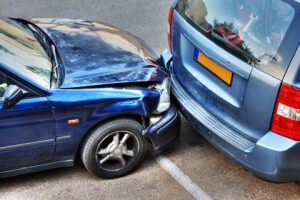Coverage for Hit and Run Accidents Indianapolis, IN
Coverage for Hit-and-Run Accidents
You may receive compensation from uninsured automobile coverage for hit-and-run accidents. Most policy clauses require the insured to report a hit-and-run accident
When the At-Fault Driver Leaves the Scene of the Accident
A typical hit-and-run accident is a collision between two vehicles, and one of them leaves the accident scene. However, there are other types of hit-and-run accidents. A hit-and-run accident may also involve chain reaction accidents, flying auto parts, auto debris on the road, and objects thrown or shot from other vehicles, as an auto accident lawyer in Indianapolis, IN at Ward & Ward Personal Injury Lawyers can explain.
Proof of Physical Encounter

The standard Indiana uninsured/underinsured (UIM) motorist endorsement addresses the problem of hit-and-run accidents in the statute. Other states do not.
For those states that do, UIM statutes can be divided into five categories: physical contact requirement; physical contact requirement unless there is no corroborating evidence, physical contact neither requirement nor prohibition; no express reference to hit-and-run accidents or to physical contact; and permits recovery in no-contact case.
Proof of an Uninsured Motorist
A claim by the victim with insurance, that the person at fault for the hit and run did not have insurance, is not proof of lack of insurance. The victim must present enough evidence to convince a judge or a jury that all reasonable efforts have been taken to discover if the defendant has an insurance policy. The victim must also show that an unknown motorist was responsible for the accident. A person is not unknown simply because his or her whereabouts are unknown.
One victim sought UIM benefits for injuries when her car went out of control after driving over oil on a roadway. The victim gave testimony that there were numerous logs on the roadway at the time of the accident. Further, the victim gave testimony that the oil already on the road came from an earlier accident involving a logging truck. The court had sufficient evidence for a jury to infer that the victim had insurance as a result of the negligence of an unknown driver.
The standard UIM clause requires an their policy-holder, or someone on his or her behalf, to report a hit-and-run accident and to file a statement of facts within a certain time. The purpose of these requirements is to make sure that the policy-holder reports the facts of the hit-and-run while still fresh in his or her mind. This reporting of the facts allows time for the policy-holder’s insurance company to make its own investigation. Several statutes impose similar requirements.
Client Review
“We have been very pleased with the Attention that has been extended to us by Charlie Ward. It seems more like a Friendship relation verses the typical Client relation.”
Sarah H.


